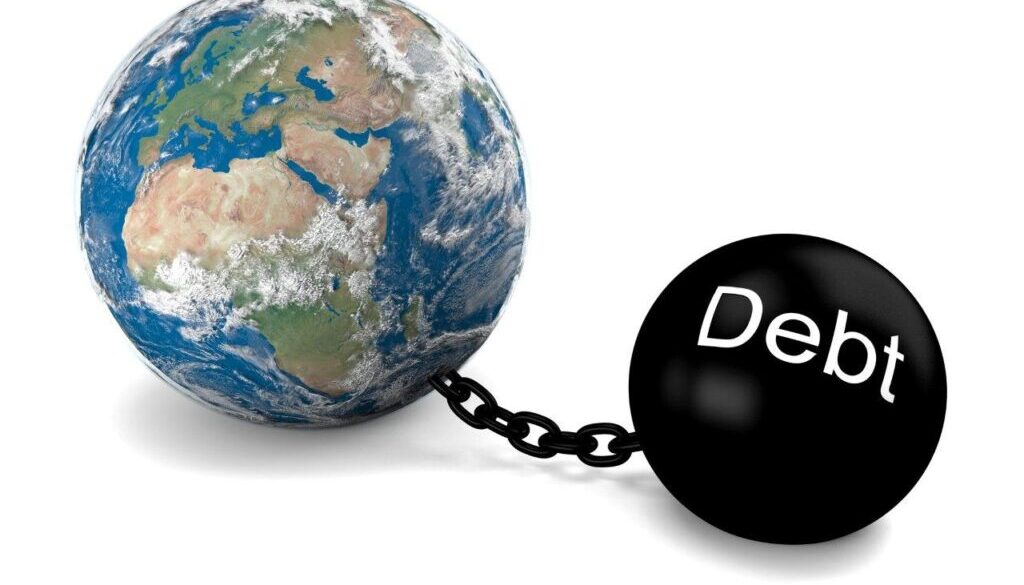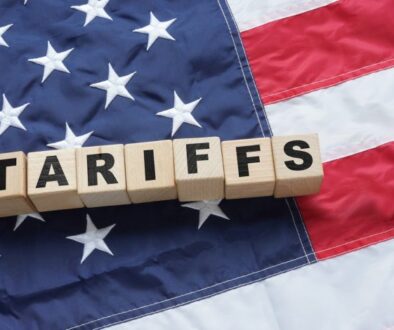Global debt is rising—and risk is growing.
Developing economies face a dangerous debt trap.
Arab banks must lead with fiscal discipline.
Since 2020, the global economy has endured an unrelenting series of disruptions—from a global pandemic and inflationary pressures to geopolitical tensions and monetary tightening. And yet, despite these severe and successive shocks, the global economic system has, thus far, demonstrated a surprising degree of stability. However, this resilience masks a growing vulnerability that can no longer be overlooked: sovereign debt.
At the heart of the matter is a silent accumulation. According to recent global data, total debt has surged nearly 25% above its pre-pandemic peak—when it was already at an all-time high. This escalation is not merely a numerical concern. It has far-reaching implications for every economy’s capacity to respond to future crises, particularly in the face of renewed protectionism, rising tariffs, and prolonged policy uncertainty.
For financial leaders in the Arab world, where economic diversification, foreign investment, and structural reforms are top policy priorities, the consequences of unchecked debt trajectories are especially pertinent. The question is not whether debt matters—but rather how its management, sustainability, and long-term implications are factored into regional economic strategies.
Debt as Deferred Taxation: A Double-Edged Fiscal Tool
Debt, by design, enables governments to undertake long-term investments or support national incomes during periods of contraction. It is a tool—often indispensable—used in lieu of immediate taxation, allowing economies to maintain momentum in the face of external shocks. However, debt is not free capital. It is a commitment deferred—a tax invoice sent to future taxpayers.
The problem arises when the cost of borrowing consistently outpaces national income. In such a scenario, debt is no longer an instrument for development but a liability constraining growth. Taxes must rise, public investment must fall, or both. In this way, persistently high debt levels become a barrier to economic progress—not a bridge to it.
This dynamic is playing out with stark intensity in many parts of the developing world. Over the past fifteen years, emerging economies—particularly low-income nations—have taken on debt at a pace of 6% of GDP per annum. For comparison, such rates of debt accumulation have historically been associated with a 50% likelihood of triggering a financial crisis.
The Arab region is not exempt from this risk. Several states, particularly those navigating post-conflict reconstruction or managing expansive welfare and subsidy programs, face mounting debt pressures. While Gulf countries may enjoy stronger buffers due to hydrocarbons and sovereign wealth funds, the broader Arab world must contend with rising borrowing costs, limited fiscal space, and demographic pressures.
Interest Rate Shocks and the Debt-Service Trap
Compounding the debt dilemma is the reality of interest rate normalization. The world is emerging from a decade of ultra-low rates—a monetary era that encouraged governments to borrow generously. But as central banks in advanced economies recalibrate toward tightening, the cost of servicing this accumulated debt has soared.
Net interest payments in many developing economies have doubled. In 2007, such payments averaged 9% of government revenues; by 2024, they exceeded 20% in many cases. These are not abstract figures—they are fiscal constraints that divert public resources away from essential sectors like healthcare, education, and infrastructure.
This vicious cycle—where governments borrow to fund current obligations, then must cut development spending to repay those debts—is increasingly visible across the Global South. In particular, the 78 poorest countries eligible for concessional loans from the World Bank’s International Development Association (IDA) are caught in a debilitating loop. Collectively, they house a quarter of the world’s population, including hundreds of millions of youth set to enter the global workforce over the next decade.
For the Arab region, the parallels are instructive. Countries with young populations—such as Egypt, Jordan, Iraq, and Yemen—must simultaneously manage debt obligations while expanding education and employment opportunities. The trade-offs are real, and the consequences of miscalculation could be severe.
The Illusion of Liquidity and the Need for Reform
A fundamental flaw in the current international financial framework lies in its inability to distinguish between illiquidity and insolvency. Too often, low-income countries are treated as if they merely need liquidity injections—short-term loans to tide them over. But the reality is more dire: many are insolvent. They need not just bridge financing, but debt restructuring or outright relief.
Yet the institutional architecture for such restructuring is outdated. It lacks speed, coordination, and decisiveness. In the absence of a modern global mechanism for debt resolution, the process remains fragmented—slow enough to allow risks to fester and economies to falter.
Arab policymakers must be particularly attentive to this structural gap. For countries facing high debt-to-GDP ratios, timely and transparent mechanisms for restructuring are critical. Ignoring these realities or delaying reform only increases the long-term costs.
At the same time, there is an urgent need to curb the rising reliance on domestic borrowing. When governments overborrow from local creditors—especially banks—it reduces the capital available for private-sector expansion. This dynamic is detrimental to financial sector development, undermining the very investment climate needed to generate sustained economic growth.
Growth Cannot Be Assumed—It Must Be Engineered
Many global policymakers continue to pin hopes on a spontaneous return to higher growth. But growth, particularly in the current context of protectionism and geopolitical fragmentation, will not resurface on its own. It must be deliberately cultivated through well-calibrated structural and regulatory policies.
For developing economies, one of the most immediate and impactful measures would be the rationalization of tariffs. Protectionist policies, though politically convenient, rarely produce long-term economic benefits. On the contrary, tariffs raise input costs, deter foreign direct investment, and stunt export potential. A strategy of uniform tariff reductions across all trading partners could restore momentum and rebuild global confidence in emerging markets.
Arab economies stand to benefit immensely from such reforms. Streamlining trade regulations, eliminating non-tariff barriers, and fostering competitive value chains can help unlock new avenues for growth. Moreover, a transparent, investment-friendly regulatory environment can attract the private capital essential to bridging infrastructure and development gaps.
Private Capital and the Trust Deficit
One of the great ironies of the current debt environment is that while many countries are desperate for investment, private capital remains hesitant to engage. The reason is simple: investors know that in highly indebted economies, any growth gains are likely to be absorbed by future taxation. Returns are less secure, and policy predictability is weak.
Thus, for Arab states with high debt burdens, reducing sovereign liabilities is not just a fiscal imperative—it is a strategic signal. It reassures markets, bolsters credibility, and creates space for productive investment. It also helps reset the national narrative—from one of crisis management to one of long-term development.
The Case for Debt Limits and Fiscal Prudence
The international community must move toward a more disciplined approach to sovereign debt. A return to prudent benchmarks—such as capping debt-to-GDP at 40% for low-income economies and 60% for high-income ones—would reestablish much-needed fiscal norms.
This is particularly important in the Arab world, where debt sustainability varies significantly across states. Oil-exporting nations with accumulated reserves must resist the temptation to over-leverage during downturns, while oil-importing countries should prioritize fiscal consolidation and revenue mobilization.
Equally important is the political will to reform subsidy systems, improve tax collection, and ensure that public spending is both efficient and inclusive. These are not easy reforms—but they are essential for building the financial resilience needed in a more uncertain global environment.
A Call to Action for Arab Banking Leaders
At this pivotal juncture, Arab central banks and financial institutions have a critical role to play. Debt sustainability is not merely a government concern—it is a national imperative that intersects directly with financial stability, credit markets, investment trends, and public confidence.
First, banking regulators must enhance their oversight of domestic sovereign exposure, ensuring that local banks are not over-concentrated in government debt at the expense of private sector credit.
Second, Arab development banks and financial institutions should advocate for a regional debt monitoring framework that promotes transparency, benchmarks risk, and facilitates timely restructuring where needed.
Third, Arab banks must step up their role in mobilizing private capital for development. This includes strengthening ESG standards, supporting SME financing, and embracing financial instruments that share risk more equitably between public and private actors.
Finally, policymakers and financial leaders must reject the assumption that debt alone can substitute for growth. Real economic resilience requires more than borrowed time. It demands bold choices, structural reforms, and a renewed commitment to balancing fiscal discipline with inclusive development.
The era of indulgent borrowing is over. The Arab financial sector must be prepared—not just to weather the new global realities, but to shape them.



